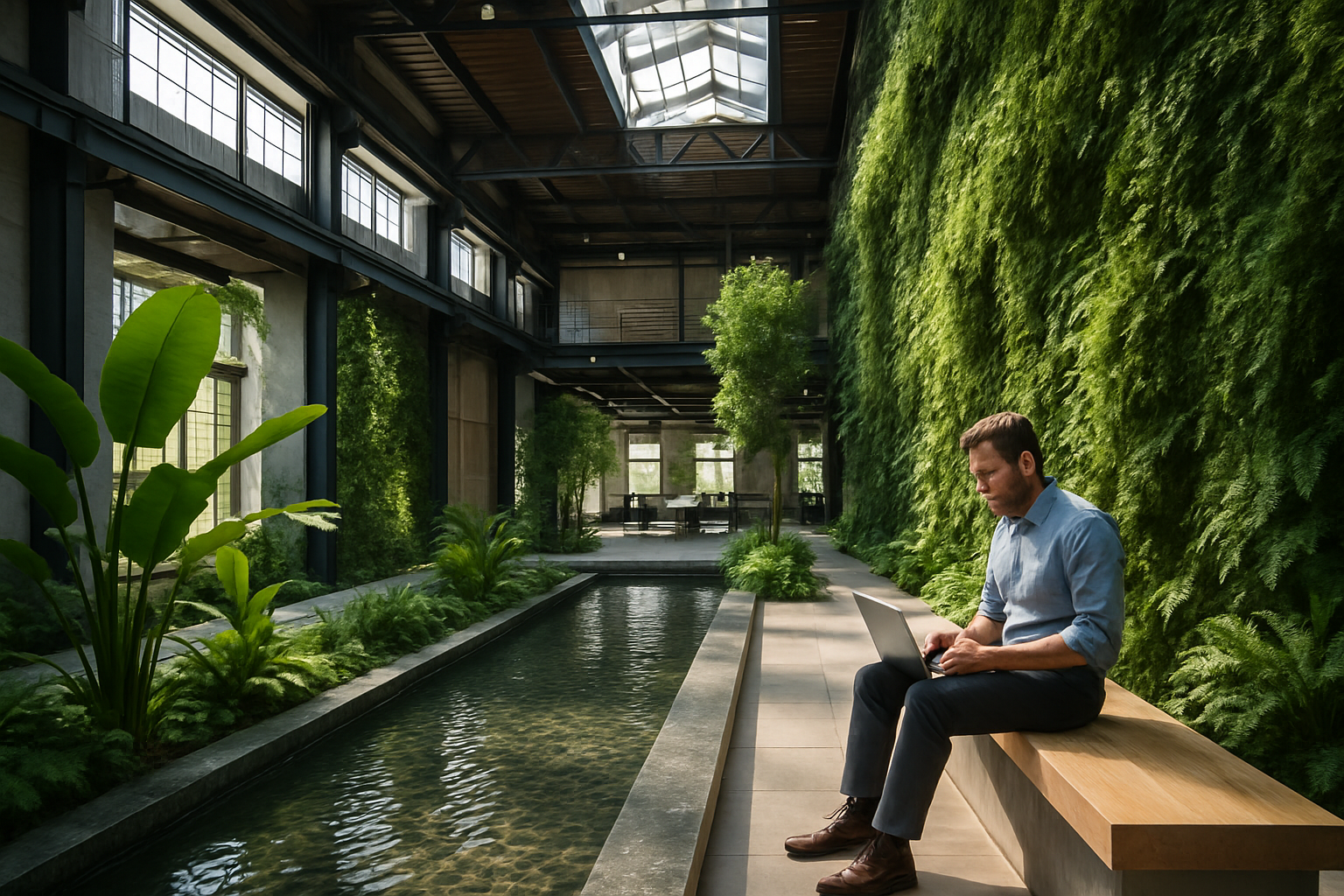Leveraging Biophilic Design in Industrial Spaces
Reimagining industrial environments through nature-inspired principles is revolutionizing workplace dynamics. Biophilic design, a concept that integrates natural elements into built environments, is gaining traction in industrial settings. This innovative approach not only enhances aesthetics but also boosts productivity, reduces stress, and improves overall well-being for workers in traditionally sterile industrial spaces.

Origins and Evolution of Biophilic Design
Biophilic design traces its roots to the concept of biophilia, introduced by psychoanalyst Erich Fromm in the 1970s and later popularized by biologist Edward O. Wilson. The term describes humans’ innate affinity for nature and living systems. As urbanization accelerated and people spent more time indoors, researchers began exploring ways to bring nature’s benefits into built environments.
Initially, biophilic design focused primarily on offices and residential spaces. However, its principles have gradually found their way into various sectors, including healthcare, education, and more recently, industrial settings. The application in industrial environments represents a significant shift, challenging the long-held notion that factories and warehouses must be purely functional, sterile spaces.
Key Principles of Biophilic Design in Industrial Spaces
Implementing biophilic design in industrial settings involves several core principles:
-
Direct Nature Integration: This includes incorporating living plants, water features, and natural light into the workspace. For instance, green walls or indoor gardens can be strategically placed in break areas or along walkways.
-
Indirect Nature References: Using natural materials, colors, and patterns that mimic nature can create a sense of connection to the outdoors. This might involve wood finishes, earth-toned color schemes, or textiles with organic patterns.
-
Space and Place Conditions: Creating environments that reflect natural settings, such as varying ceiling heights to mimic forest canopies or designing pathways that meander like natural trails.
-
Natural Processes: Incorporating dynamic and diffused light, natural ventilation systems, and visible ecological processes can heighten awareness of natural cycles and seasons.
Benefits for Industrial Operations
The integration of biophilic design in industrial spaces offers numerous advantages:
-
Enhanced Productivity: Studies have shown that exposure to natural elements can increase productivity by up to 8%. In industrial settings, this can translate to significant output improvements.
-
Reduced Stress and Absenteeism: Nature-inspired environments have been linked to lower stress levels and fewer sick days, potentially reducing operational disruptions and healthcare costs.
-
Improved Cognitive Function: Natural elements can enhance focus, creativity, and problem-solving abilities, crucial for complex industrial processes and innovation.
-
Better Air Quality: Living plants and natural ventilation systems can improve air quality, particularly important in industrial environments where air pollution may be a concern.
-
Enhanced Safety: Biophilic design can improve spatial awareness and reduce fatigue, potentially leading to fewer workplace accidents.
Challenges and Considerations
While the benefits are compelling, implementing biophilic design in industrial spaces comes with unique challenges:
-
Safety Regulations: Ensuring that natural elements don’t interfere with safety protocols or machinery operations is paramount.
-
Maintenance: Living elements like plants require ongoing care, which may necessitate new maintenance protocols.
-
Initial Costs: The upfront investment for biophilic design elements can be significant, though long-term benefits often outweigh these costs.
-
Space Constraints: Industrial facilities may have limited space for implementing extensive natural features, requiring creative solutions.
-
Resistance to Change: There may be skepticism about the relevance of nature-inspired design in industrial settings, necessitating education and gradual implementation.
Case Studies: Success Stories in Industrial Biophilia
Several companies have successfully integrated biophilic design into their industrial spaces:
-
A major automotive manufacturer incorporated a living wall and skylights in their assembly plant, reporting a 15% increase in worker satisfaction and a 7% boost in productivity.
-
A pharmaceutical company redesigned its research and production facility with nature-inspired elements, resulting in improved air quality and a 12% reduction in employee sick days.
-
An electronics manufacturer integrated indoor gardens and natural light in its warehouse, leading to enhanced employee well-being and a 9% increase in order accuracy.
Practical Strategies for Implementation
• Start small: Begin with pilot projects in break rooms or common areas to gauge impact and employee response.
• Prioritize natural light: Install skylights or light tubes to bring more daylight into the facility.
• Introduce plant life: Use potted plants, vertical gardens, or even moss walls in appropriate areas.
• Incorporate natural materials: Use wood, stone, or other natural materials in furnishings and finishes.
• Mimic natural patterns: Integrate biomorphic forms and patterns in flooring, wall coverings, or structural elements.
• Create visual connections: Use glass partitions or strategic layout to maintain views of outdoor green spaces.
• Implement circadian lighting: Install lighting systems that mimic natural light patterns to support workers’ circadian rhythms.
As industrial spaces continue to evolve, biophilic design presents a compelling opportunity to create more human-centric, productive, and sustainable work environments. By thoughtfully integrating nature-inspired elements, companies can not only improve operational efficiency but also contribute to the well-being and satisfaction of their workforce. As this trend gains momentum, it’s likely to reshape our perception of industrial spaces, blending functionality with the restorative power of nature.





